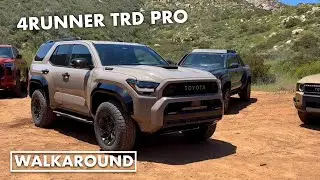Interior of the 2023 Honda Pilot Elite
Honda’s fourth-generation Pilot is here in all of its squared-off, butched-up glory. Packing an updated powertrain with new drive modes and an upgraded TrailSport model for the outdoorsy types, the overhauled three-row wades into a segment where every new entry seems to push the boundaries of jack-of-all-trades utility and light-duty adventuring.
Honda picked Sedona because it was one of many places across the country where its engineers spent time testing the capabilities of its new TrailSport models, Pilot included. Home turf, if you will. What the company didn’t count on was a freak January snowstorm that paralyzed the small town’s main arteries for several hours on the morning of our test drive. Neither the Elite nor the TrailSport models Honda brought along for evaluation were equipped with snow tires, so we were cautioned about following distances and slick hills before being released into the snow-covered desert.
We started our drive in a TrailSport. The unique conditions provided an opportunity to test one of the fourth-gen Pilot’s new additions: selectable drive modes. Sure enough, “Snow” is one of them, and paired with the Continental all-terrains, it handled the slop with aplomb. A full-ABS braking test found reasonable grip from the knobby A/Ts even on icy hills, giving us confidence that we’d be able to get by on some of the area’s steeper inclines.
A set of knobby tires might prompt concerns among those of you who know Honda’s history of delivering models that suffer a bit more than average from wind and road noise intrusion, but the Contis were admirably quiet even on rough desert asphalt. After trading in the TrailSport for an Elite, we actually found the latter’s all-seasons to be a bit more talkative on messy pavement, but the weather conditions and rather generous application of what appeared to be cinder treatment on the roads made for a challenging testing environment.
Both models are powered by the Pilot’s new standard 3.5-liter V6. Yes, that may sound like a carryover, but is in fact a new, DOHC design. Power was bumped ever so slightly to 285 horsepower and 262 pound-feet (up from 280 hp and 262 lb-ft) and the 10-speed automatic (with paddle shifters!) returns. Standard on the TrailSport and Elite, and optional on the other trims, is the second-generation of Honda’s i-VTM4 torque-vectoring all-wheel-drive system. It features a stronger rear diff that can handle 40% more torque while responding 30% quicker. As much as 70% of the engine’s power can be sent to the rear axle, with 100% of that transferred to one wheel.
Sedona sits more than 4,000 feet above sea level. Those altitudes are borderline hostile to naturally aspirated engines, to the tune of a roughly 40-horsepower deficit. That made Honda’s choice of testing venues a bold one. A turbocharged unit would lose a lot less of its wind out here, but the V6 held its own despite the Pilot’s heft. The standard 2WD model checks in at a reasonable 4,030 pounds. The AWD models we sampled are a good bit heavier — 4,685 for the TrailSport and 4,660 for the loaded-up Elite. Heavy though these figures may sound, they’re in line with the Highlander Platinum (4,453 pounds) and Pathfinder Rock Creek (4,605 pounds). And for context, all of them weigh less than even a two-row Jeep Grand Cherokee Overland (4,721 pounds).
For more visit



















